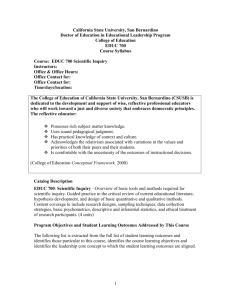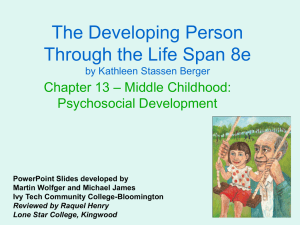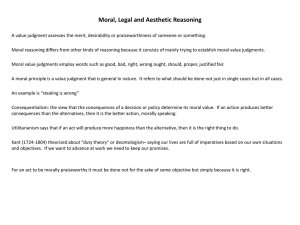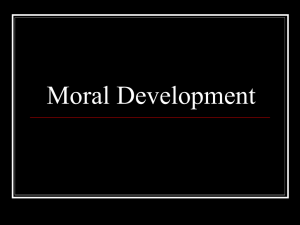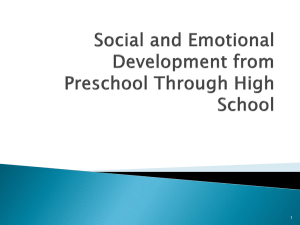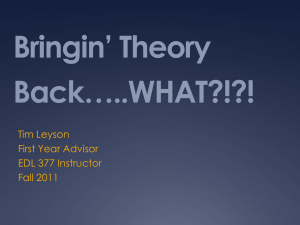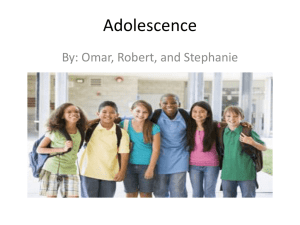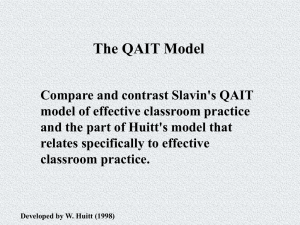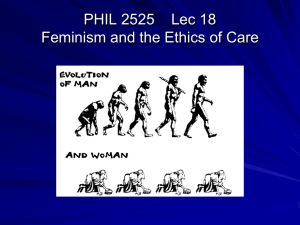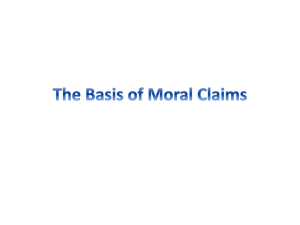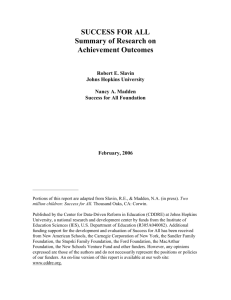Theories of Moral Development Piaget & Kohlberg
advertisement
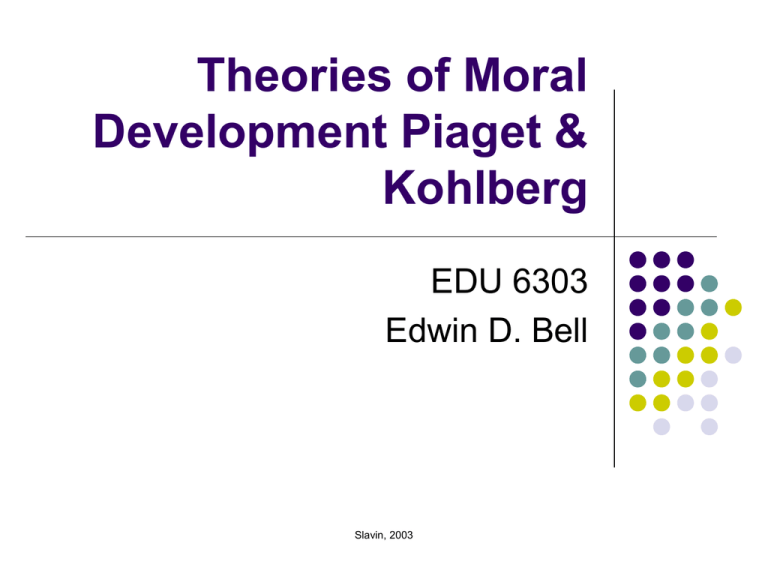
Theories of Moral Development Piaget & Kohlberg EDU 6303 Edwin D. Bell Slavin, 2003 Piaget’s Stages of Moral Development Piaget hypothesized two stages of moral development Heteronomous morality Autonomous reality Slavin, 2003 Heteronomous Morality (Younger Children) Based on relations of constraints Rules are seen as inflexible requirements (moral realism) Badness is judged in terms of the consequences of actions Punishment is seen as the automatic consequence of the violation of rules Slavin, 2003 Autonomous Morality (Older Children) Based on relations of cooperation among equals Rules are viewed as products of mutual agreement (rational moral attitudes) Badness is determined the person’s intentions Punishment should be affected by human intention Slavin, 2003 Kohlberg’s Stages of Moral Reasoning He identified three levels that are made up of six stages; The levels are Preconventional Conventional Postconventional Slavin, 2003 Preconventional Level Stage 1: Punishment and obedience orientation. Physical consequences of action determine its goodness or badness. Stage 2: Instrumental relativist orientation. What is right is what satisfies your own needs and occasionally the needs of others, e.g., the expectations of the family group or nation can be seen as valuable in own right. Slavin, 2003 Conventional Level Stage 3: “Good boy – good girl” orientation – good behavior is what pleases or helps others and is approved by them Stage 4: Law and order orientation – right is doing one’s duty, showing respect for authority, and maintaining social order for its own sake Slavin, 2003 Postconventional Level Stage 5: Social contract orientation – what is right is a function of individual rights and agreed upon standards. Stage 6: Universal ethical principle orientation – what is right is determined decision of conscience according to selfchosen ethical principles (these principles are abstract and ethical not specific moral prescriptions) Slavin, 2003 Criticisms Kohlberg’s population for his research was primarily male. Some research on girls’ moral reasoning finds patterns that are somewhat different from those proposed by Kohlberg. Whereas boys’ moral reasoning revolves primarily around issues of justice, girls are more concerned about issues of caring and responsibility for others. (Slavin, 2003, pp. 58-59) Slavin, 2003 Criticisms (continued) Young children often reason about moral situations in more sophisticated ways than the stage theories of Piaget and Kohlberg would suggest. Children as young as 3 or 4 years old use intentions to judge the behavior of others (Slavin, 2003). Slavin, 2003 Criticisms (continued) Moral reasoning does not directly translate into behavior. Behavior may be affected by many other factors other than reasoning, e.g., “Go along to get along” Slavin, 2003 Reference Slavin, R. E. (2003). Educational Psychology: Theory and Practice, 7e. Boston, MA. Allyn and Bacon. Slavin, 2003
